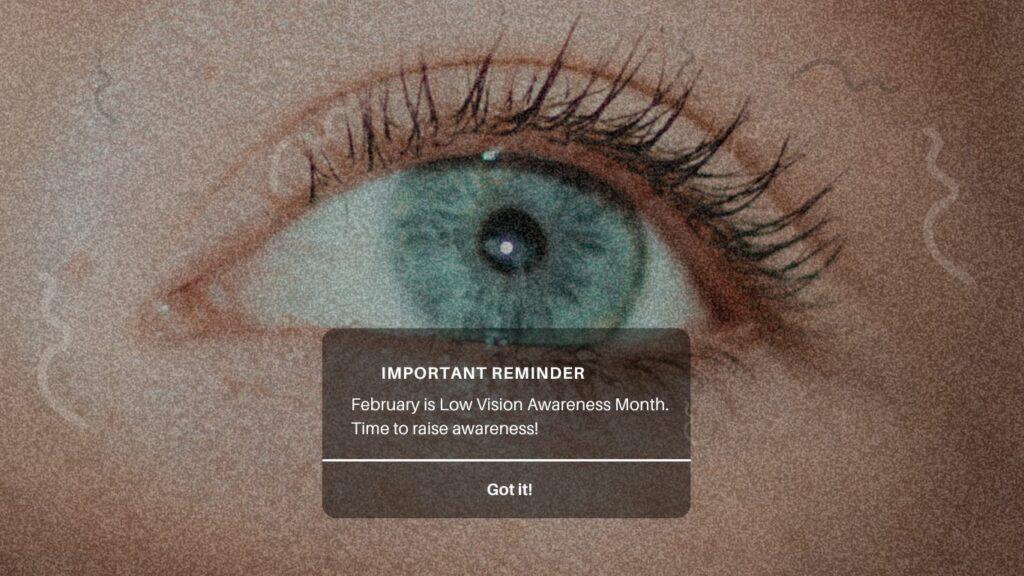February is Low Vision Awareness Month, and the Visual Snow Initiative would like to bring attention to not only the challenges faced by people with more traditional forms of low vision, but also those with conditions like Visual Snow Syndrome (VSS). Through spreading education during Low Vision Awareness Month, we want everyone to be aware that VSS can be classified as low vision and understand how the condition can affect people.
Visual Snow Syndrome, also known as VSS, primarily affects the neurological processing of visual information and entails numerous visual symptoms/disturbances; therefore, it has implications for vision and may be considered a form of low vision.
The definition of low vision encompasses various visual impairments that cannot be fully corrected by conventional means such as glasses, contact lenses, or surgery.
VSS symptoms impact the entire visual field, causing difficulties in tasks that require detailed vision, color perception, depth perception, and distinguishing colors. Additionally, individuals may experience impaired contrast sensitivity, making it hard to perform everyday activities such as driving, reading, studying, cooking, and much more.
Challenges in perceiving clear and stable visual information arise due to the persistent visual disturbances associated with VSS, including:
- Visual static or "snow"
- Palinopsia/Afterimages
- Light sensitivity (Photophobia)
- Light sensitivity (Photophobia)
- Starbursts/Halos
- Blue Field Entoptic Phenomenon (BFEP)
- Floaters
- Glare
- Nyctalopia (impaired night vision)
- Migraine Aura
For a full list of visual and non-visual VSS symptoms, please see our Diagnostic Criteria using the button below.
If you are concerned about experiencing any visual disturbances or symptoms, please visit our Visual Snow Physicians & Specialists.
It is important to help spread knowledge about VSS and low vision not just during Low Vision Awareness month throughout February, but consistently throughout the year. This can lead to increased awareness, education, and advancements in VSS research, as well as better healthcare outcomes for patients and physicians.


